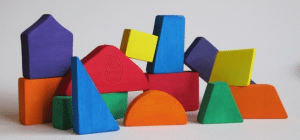It is increasingly clear that global health, education, poverty and environmental challenges are profoundly interconnected. Getting to the root of the problems and driving toward new solutions is complex.

Unlike trying to assemble the pieces of a puzzle to arrive at one clear solution, we should consider the analogy of building with toy blocks. Each block can be part of the answer and represents the potential of something great. As we uncover the root of the issues, we also might find we can connect the pieces in a variety of ways to arrive at multiple, equally good solutions.
Earlier this Fall, I used this analogy at the U.S. Chamber of Commerce Foundation’s 2015 Corporate Citizenship Conference to continue a conversation on “Navigating the Interconnectedness of Social Challenges” with an expert panel of corporate of corporate citizenship practitioners – William D. Eggers, Director of Global Public Sector Research at Deloitte, Kathy Pinkus, Divisional Vice President of Global Citizenship and Policy at Abbott and Michael Jacobson, Director of Corporate Responsibility at Intel. Based on our conversation, here are five ways that companies can better connect the pieces to drive toward increased societal impact:
- Get curious, really curious! Never stop taking the time to listen and learn. The only way to discover and understand “root causes” is through deep listening and putting your assumptions aside. It often requires hearing realities that you are not ready or do not want to see. Remember, there is nothing more powerful than a great question.
- Harness the power of integrators. Organizations that convene, guide and lead are essential to helping multi-sector partners connect the dots and craft complex solutions. The best integrators do more than just bring people to the table; they bring out strengths, build bridges and continuously drive the agenda forward. Going it alone is a way of the past.
- Find your lane. Identify specific pieces or “blocks” that enable your company to stand out, while letting those contributions be a part of a master solution. Ownership is ok, but not if it distracts from the collaborative work at hand.
- Remember that the best ideas can come from others. Often the most effective thing you can do is to foster and nurture the amazing power of someone else’s idea. Regularly put yourself in a position to crowdsource, co-ideate and bring new, sustainable ideas to scale. Always consider whether you have the right potential partners, stakeholders, and “blocks” at the table.
- Don’t be Afraid to take the pieces apart and try something new. Learn from the past. If something is working, test its elasticity. If it is not working, stop supporting it in the same way. It is not only alright to change course, it is imperative. One participant echoed Bill Gates when he advised us all to “turn wicked challenges, into wicked opportunities.”
For more approaches on how to connect-the-dots around complex issues, read Walking The Tightrope: 5 Strategies to Generate Both Local and Global Impact, summarizing a Plenary-to-Participant session with The Western Union Foundation, CH2M, Microsoft, and the Office of Global Partnerships at the U.S. State Department.
